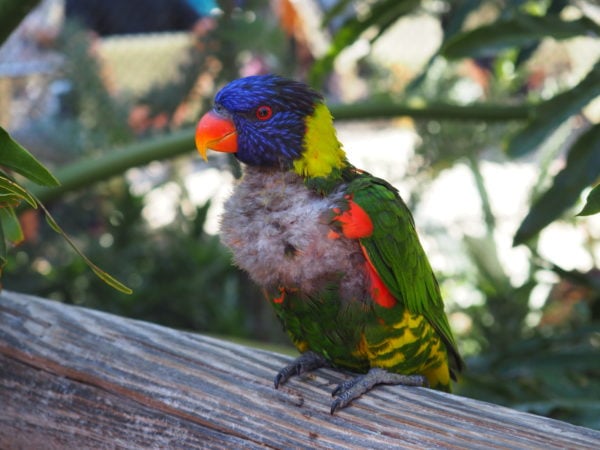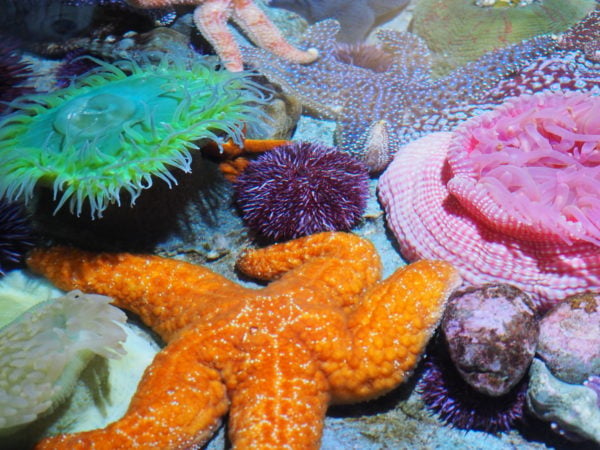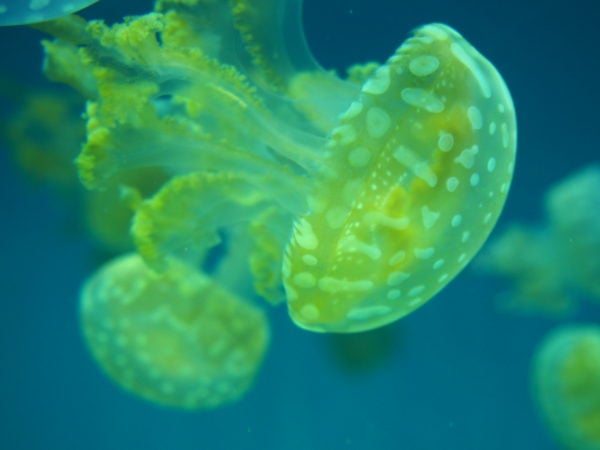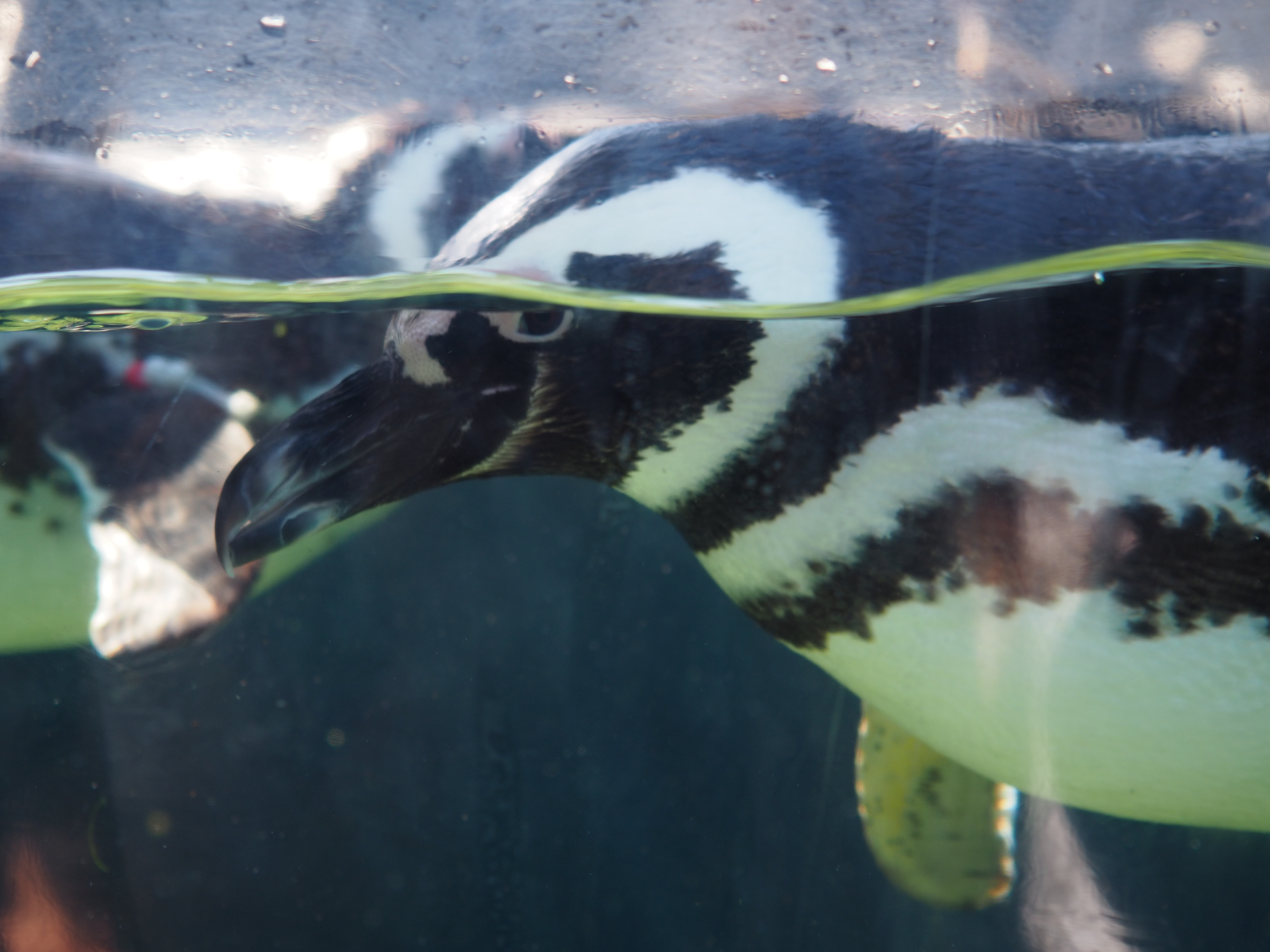Located on the shores of Long Beach, California, the Aquarium of the Pacific presents a multitude of delights for everyone. Couples of all ages roam the building and outdoor space (known as Explorer’s Cove), while families speaking a variety of languages with squealing children run amuck, pressing their faces to the glass of each habitat. Entering the aquarium, a life-sized blue whale model hanging from the ceiling greets the visitors, while aquarium staff periodically give educational presentations.
The multi-storied Explorer’s Cove provides plenty of stimulation, from touch tanks (made notorious in “Finding Dory”) with moon jellies, sharks, rays and horseshoe crabs to the Magellanic penguin habitat. Explorer’s Cove is similar to the aquarium pictured in “Finding Dory,” but the film claims to have modeled the aquarium after the Monterey Bay Aquarium. The large seal and sea lion habitat has both an overhead viewing area and an indoor location to watch the animals play. A less crowded area of Explorer’s Cove houses the Molina Animal Care Center, where visitors can watch animals being rehabilitated or learn about animals from their caretakers.

A highlight of the outdoor area is the Lorikeet Forest. Lorikeets are colorful, noisy and absolutely adorable birds slightly smaller and thinner than pigeons, commonly found in rainforest regions of Australia. Guests can view (but not touch!) these birds, and for four dollars they can feed the lorikeets a small cup of nectar — increasing the chances of a lorikeets landing on them for a photo op. The Lorikeet Forest boasts a 5,400-square-foot fenced outdoor space with more than 100 rainbow lorikeets.
The second floor of the aquarium offers the most indoor space, with three separate hallways filled with fish and creatures of all types. A sea star touch tank garnered much interest from children looking to touch the brightly colored marine animals. Others gathered around the tanks filled with seahorses, jellies and the obligatory Nemo clownfish and Dory blue tangs. There’s also a large indoor habitat with sea otters, accompanied by educational exhibits and signage.

The indoor section of the aquarium attempts to build up the environmental aesthetic of each section. As an example, the terrariums, containing a variety of frog species, are dimmer and adorned by rainforest decorations, making some areas of the aquarium surprisingly dark. However, the open, glass-paneled nature of most of the aquarium provides quite a bit of light and shelter from the heat of the outdoor area. In addition, visitors can walk through a near-tunnel of an aquarium habitat, as if completely surrounded by marine life.

Like many aquariums, the Aquarium of the Pacific attracts children and families to its facility. It provides day-long entertainment (and if you enjoy reading, then even educational entertainment) to all animal lovers — which, after visiting, should hopefully be everyone. The interactive exhibits and renovated habitats give the aquarium an edge over a zoo, giving visitors up-close-and-personal encounters with some of the most magical creatures of the Pacific.
Contact Olivia Popp at oliviapopp ‘at’ stanford.edu.
